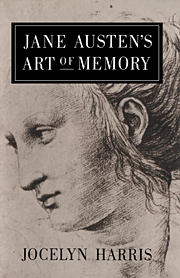Book contents
- Frontmatter
- Contents
- Preface
- 1 Northanger Abbey
- 2 The return to Richardson
- 3 Sense and Sensibility
- 4 Pride and Prejudice
- 5 Mansfield Park
- 6 Emma
- 7 Persuasion
- Conclusion: ‘Nothing can come of nothing’
- Appendix 1 The History of Sir Charles Grandison
- Appendix 2 Sir Charles Grandison in the juvenilia
- Notes
- Bibliography
- Index
Appendix 2 - Sir Charles Grandison in the juvenilia
Published online by Cambridge University Press: 18 August 2009
- Frontmatter
- Contents
- Preface
- 1 Northanger Abbey
- 2 The return to Richardson
- 3 Sense and Sensibility
- 4 Pride and Prejudice
- 5 Mansfield Park
- 6 Emma
- 7 Persuasion
- Conclusion: ‘Nothing can come of nothing’
- Appendix 1 The History of Sir Charles Grandison
- Appendix 2 Sir Charles Grandison in the juvenilia
- Notes
- Bibliography
- Index
Summary
The family members to whom Jane Austen dedicated her early works knew Grandison almost as well as she did. We may share their pleasures of recognition if we track the allusions down.
The young Jane Austen learned her craft by play when she attacked conventions established over fifty years of novel-writing, as B. C. Southam in Literary Manuscripts especially has seen. But it was Richardson who originally gave power to these worlds of peerless heroes, matchless heroines, unspeakable villains, domineering fathers, elopements, recognition scenes, and alarming manifestations of sensibility. Other authors only ‘tread in Richardson's steps, so far as Man's determined pursuit of Woman in defiance of every opposition of feeling ‘convenience is concerned’, as Jane Austen herself acknowledged in Sanditon [Minor Works, 404).
Many of her targets, summarised in their purest form in Plan of a Novel, are not therefore Grandison's alone, but I shall distinguish those which I think are. She was thoroughly conversant with Grandison when she wrote these early works. Two direct references prove it. Lady Williams who ‘like the great Sir Charles Grandison scorned to deny herself when at Home, as she looked on that fashionable method of shutting out disagreable Visitors, as little less than downright Bigamy’ (Minor Works, 15; Grandison, II. 388) takes a nice hit at Sir Charles, in love with two women at once. Jane Austen's remarking on ‘that favourite character of Sir Charles Grandison's, a nurse’, again shows her grasp of even minor detail (186; II. 90).
- Type
- Chapter
- Information
- Jane Austen's Art of Memory , pp. 228 - 238Publisher: Cambridge University PressPrint publication year: 1989



